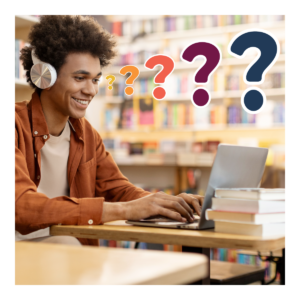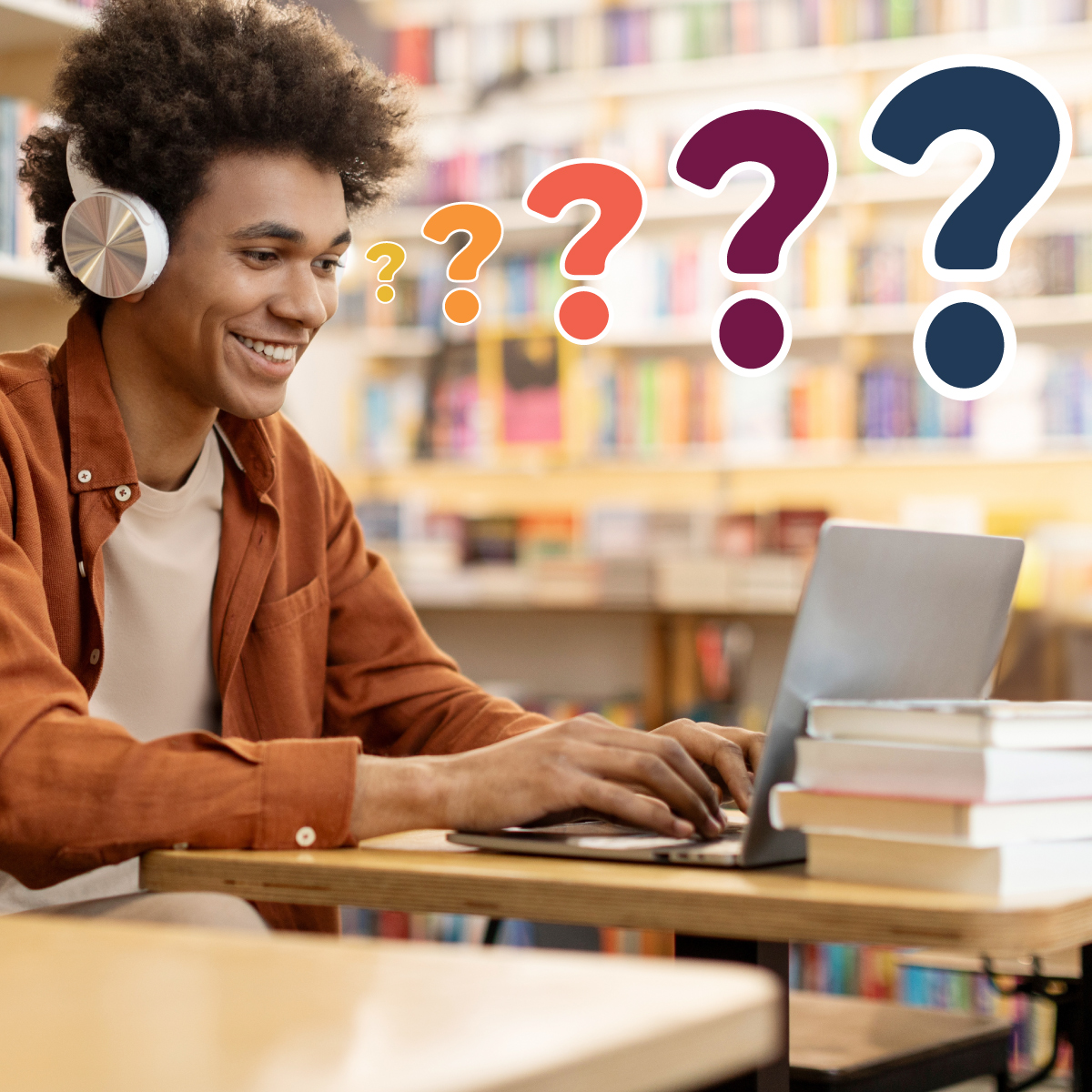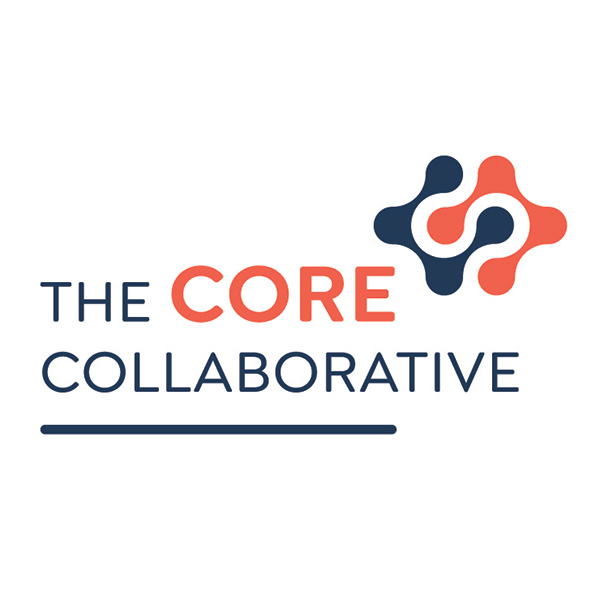Self-questioning isn’t just a tool—it’s a catalyst for unlocking a deeper, more empowered way of learning. Whether in ELA, science, or social studies, it propels students from passive receivers of information to active explorers of ideas.
Self-questioning is a powerful cognitive strategy that supports deeper engagement with texts, ideas, and concepts across multiple disciplines. John Hattie, a renowned educational researcher, has found that self-questioning has an effect size of 0.64, making it a high-impact strategy for deeper learning. This approach helps students actively reflect on their comprehension, identify areas of uncertainty, and think critically—skills that are essential for academic success and lifelong learning.
Let’s explore the benefits of self-questioning, drawing on examples from the Common Core State Standards (CCSS) for English Language Arts, the Next Generation Science Standards (NGSS), and the C3 Social Studies Framework.
 The Benefits of Self-Questioning
The Benefits of Self-Questioning
- Promotes Critical Thinking: By encouraging students to interrogate texts and concepts, self-questioning fosters critical analysis and deeper understanding. This helps students not only comprehend but also evaluate and synthesize information.
- Enhances Comprehension: Self-questioning turns students into active readers and learners, prompting them to regularly check their understanding and clarify confusing elements. This active engagement increases retention and understanding of the material.
- Fosters Independence: Self-questioning empowers students to become independent learners. Instead of always seeking guidance from teachers, they learn to assess their progress and make necessary adjustments.
- Increases Engagement: Asking questions about the material makes learning more personal and engaging. Students connect with the content more deeply when they feel like they are in conversation with the text or problem.
Practical Examples of Self-Questioning in ELA, Science, and Social Studies
CCSS 4.RL.2: Determine a theme of a story, drama, or poem from details in the text; summarize the text.
Self-Questioning Example:
- What is the author trying to tell me through the characters and events in this story?
- Which specific details help me understand the theme?
- How can I summarize this text, including the theme, in my own words?
This prompts students to connect the dots between key details and the overarching message, fostering deeper comprehension and critical thinking around literary themes.
CCSS 5.RL.3: Compare and contrast two or more characters, settings, or events in a story or drama, drawing on specific details in the text.
Self-Questioning Example:
- What are the main similarities and differences between these two characters?
- How do the settings or events affect each character’s behavior or choices?
- Why does the author include these contrasts, and how do they influence the overall story?
By asking these questions, students practice comparing and contrasting elements within a text, which strengthens their analytical skills and their ability to evaluate the impact of these elements on the narrative.
CCSS 5.RI.2: Determine two or more main ideas of a text and explain how they are supported by key details; summarize the text.
Self-Questioning Example:
- What are the main ideas presented in this text?
- Which details in the text support each main idea?
- How can I summarize these ideas clearly and concisely?
This process encourages students to distill essential information from informational texts, making them more efficient in understanding and summarizing content.
CCSS 3.RI.5: Use text features and search tools (e.g., keywords, sidebars, hyperlinks) to locate information relevant to a given topic efficiently.
Self-Questioning Example:
- What text features (e.g., headings, sidebars) can help me find the information I need quickly?
- How does the diagram or sidebar enhance my understanding of the main text?
- What keywords should I use to search for more information on this topic?
This helps students become proficient in navigating informational texts and using text features effectively, which is crucial for research and comprehension.
Aligning Self-Questioning with NGSS Standards
Self-questioning is equally beneficial in fostering scientific inquiry and critical thinking in the sciences. Here’s how it can be applied to NGSS:
NGSS 3-PS2-4: Define a simple design problem that can be solved by applying scientific ideas about magnets.
Self-Questioning Example:
- What do I already know about how magnets work?
- What problem am I trying to solve using magnets?
- What evidence can I gather to support my design solution?
By asking these questions, students can think like scientists and engineers, encouraging them to connect scientific concepts with real-world applications.
NGSS 5-ESS2-1: Develop a model using an example to describe ways the geosphere, biosphere, hydrosphere, and atmosphere interact.
Self-Questioning Example:
- How do Earth’s systems interact with each other in this scenario?
- What evidence can I use to support my model of how the hydrosphere affects the geosphere?
- What changes might occur in the other systems if one system is impacted?
This encourages students to think critically about systems and their interactions, helping them develop models that explain complex processes.
Self-Questioning in the C3 Social Studies Framework
The C3 Social Studies standards emphasize inquiry and critical thinking, making self-questioning an essential skill for students as they analyze history, civics, economics, and geography.
C3 Standard D2.His.3.6-8: Use questions generated about individuals and groups to analyze why they, and the developments they shaped, are seen as historically significant.
Self-Questioning Example:
- What specific actions did this individual or group take that make them historically significant?
- How did their actions impact society at the time and in the long term?
- What evidence can I find that supports the significance of these developments?
By generating their questions, students critically engage with historical content, analyzing not just the “what” of history, but the “why” behind its importance.
C3 Standard D2.Geo.4.9-12: Analyze relationships and interactions within and between human and physical systems to explain reciprocal influences that occur among them.
Self-Questioning Example:
- How do human actions affect the physical environment, and vice versa?
- What evidence can I find of this interaction in specific regions or case studies?
- What are the short-term and long-term consequences of the interactions on both human and physical systems?
This self-questioning process helps students connect geography and human behavior, fostering a deeper understanding of the interplay between the environment and human societies.
Implementing Self-Questioning in the Classroom
Incorporating self-questioning into daily classroom routines can be simple and effective:
- Model Self-Questioning: Teachers can demonstrate self-questioning by thinking aloud as they read or solve a problem, showing students how to engage with the content.
- Provide Question Stems: Scaffold students’ thinking with question stems such as “What does this mean?” “Why is this important?” or “How does this connect to what I’ve learned?”.
- Reflective Journals: Encourage students to document their self-questions in journals, tracking how their thinking evolves and deepens their understanding.
Self Questioning: A Catalyst for Deeper Learning
Self-questioning isn’t just a tool—it’s a catalyst for unlocking a deeper, more empowered way of learning. Whether in ELA, science, or social studies, it propels students from passive receivers of information to active explorers of ideas. By encouraging students to ask their own questions, we equip them with the skills to think critically, navigate complex challenges, and take full ownership of their learning journey. The result? Learners who are not only prepared for academic success but are also primed for a lifetime of thoughtful, independent inquiry. Empowering students to question is the key to cultivating true agency and intellectual growth.



